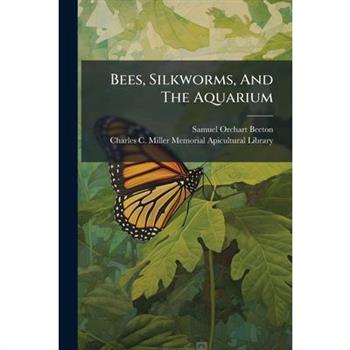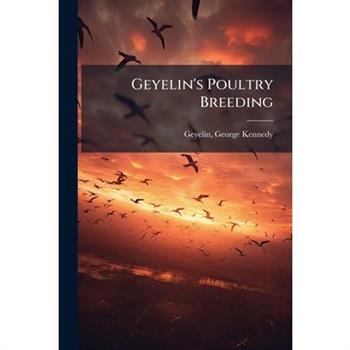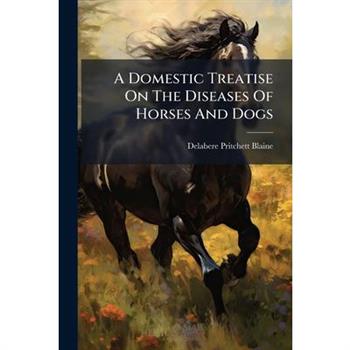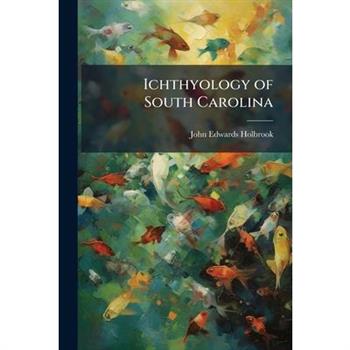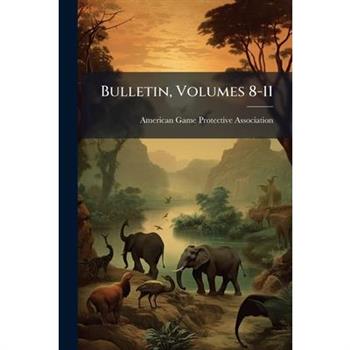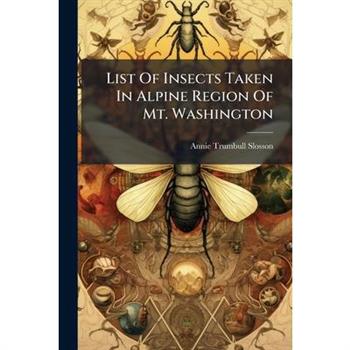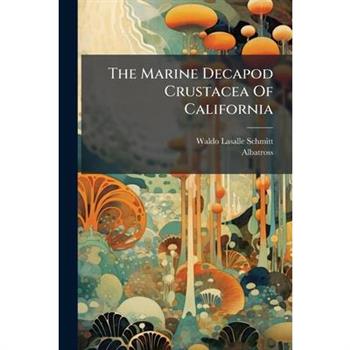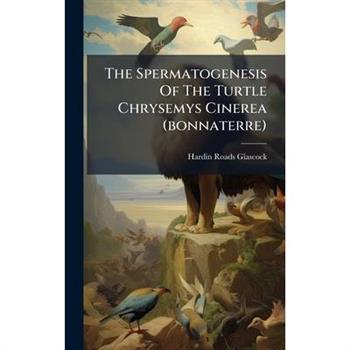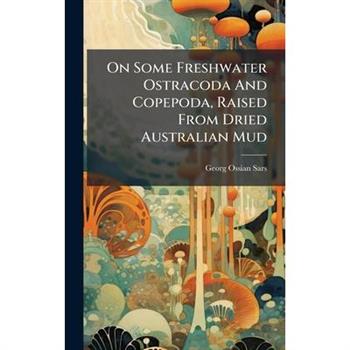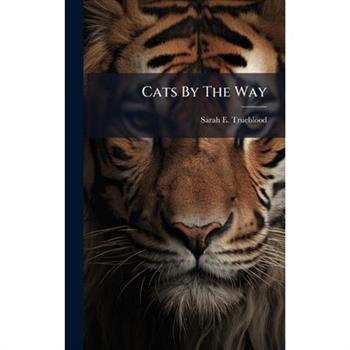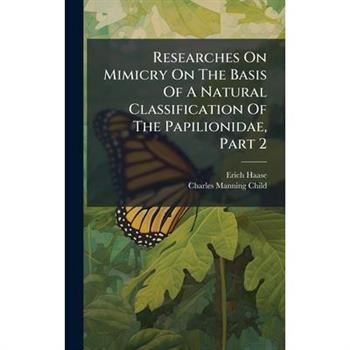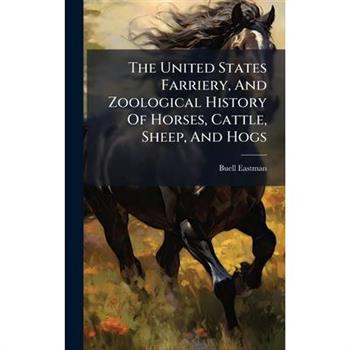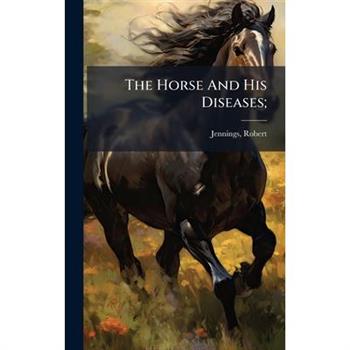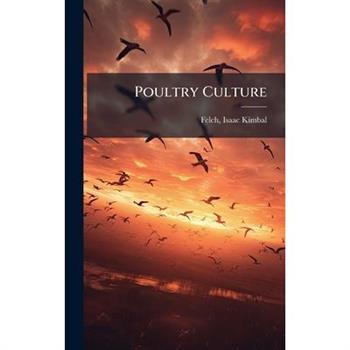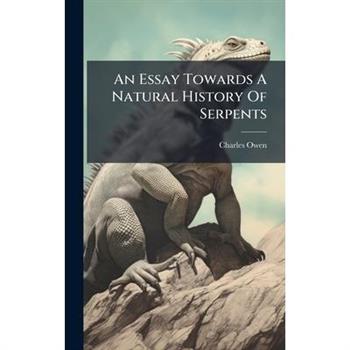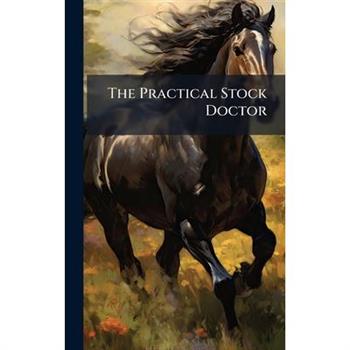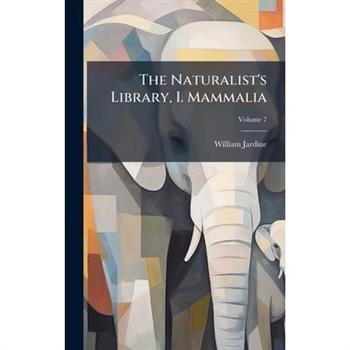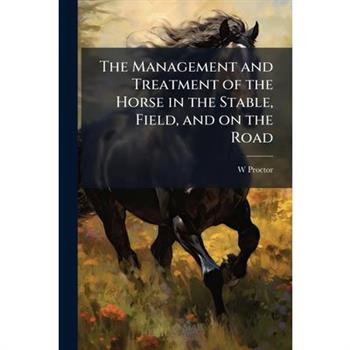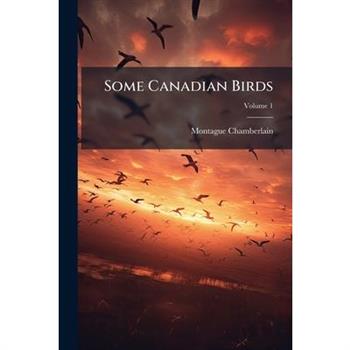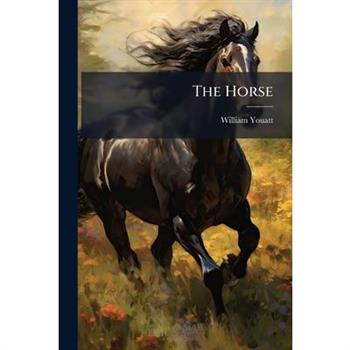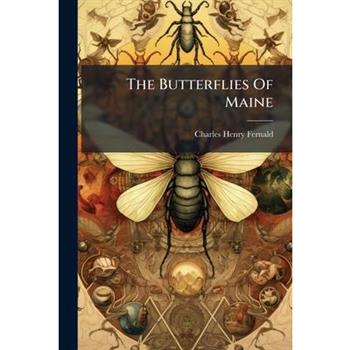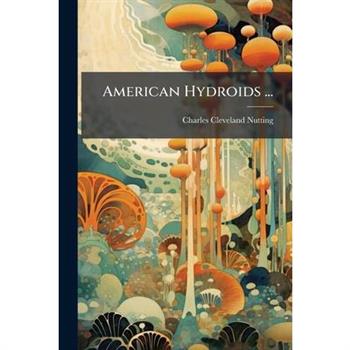The United States Farriery, And Zoological History Of Horses, Cattle, Sheep, And Hogs
"The United States Farriery, And Zoological History Of Horses, Cattle, Sheep, And Hogs" by Buell Eastman is a comprehensive historical text on animal husbandry and veterinary practices in the United States. This book provides insights into the methods and knowledge used in the care and treatment of livestock during the period it was written. Including detailed engravings, this volume serves as a valuable resource for understanding the agricultural and medical approaches of the time.Explore the historical context of animal care and gain a deeper appreciation for the evolution of veterinary medicine through this detailed examination of horses, cattle, sheep, and hogs.This work has been selected by scholars as being culturally important, and is part of the knowledge base of civilization as we know it. This work was reproduced from the original artifact, and remains as true to the original work as possible. Therefore, you will see the original copyright references, library stamps (as most of these works have been housed in our most important libraries around the world), and other notations in the work.This work is in the public domain in the United States of America, and possibly other nations. Within the United States, you may freely copy and distribute this work, as no entity (individual or corporate) has a copyright on the body of the work.As a reproduction of a historical artifact, this work may contain missing or blurred pages, poor pictures, errant marks, etc. Scholars believe, and we concur, that this work is important enough to be preserved, reproduced, and made generally available to the public. We appreciate your support of the preservation process, and thank you for being an important part of keeping this knowledge alive and relevant.
Bees, Silkworms, And The Aquarium
Explore the fascinating world of insects and aquatic life with "Bees, Silkworms, And The Aquarium". This intriguing volume delves into the intricate lives of bees and silkworms, offering insights into their behavior, habitats, and the practical aspects of their care. Additionally, the book explores the captivating realm of aquariums, providing guidance on setting up and maintaining thriving aquatic environments.A valuable resource for nature enthusiasts and budding entomologists, "Bees, Silkworms, And The Aquarium" offers a timeless glimpse into the natural world and the delicate balance of ecosystems. Whether you're a seasoned naturalist or simply curious about the wonders of nature, this book promises to educate and inspire.This work has been selected by scholars as being culturally important, and is part of the knowledge base of civilization as we know it. This work was reproduced from the original artifact, and remains as true to the original work as possible. Therefore, you will see the original copyright references, library stamps (as most of these works have been housed in our most important libraries around the world), and other notations in the work.This work is in the public domain in the United States of America, and possibly other nations. Within the United States, you may freely copy and distribute this work, as no entity (individual or corporate) has a copyright on the body of the work.As a reproduction of a historical artifact, this work may contain missing or blurred pages, poor pictures, errant marks, etc. Scholars believe, and we concur, that this work is important enough to be preserved, reproduced, and made generally available to the public. We appreciate your support of the preservation process, and thank you for being an important part of keeping this knowledge alive and relevant.
Geyelin's Poultry Breeding
"Geyelin's Poultry Breeding," originally published in 1867, offers a fascinating glimpse into the practices and knowledge surrounding poultry breeding in the mid-19th century. Written by George Kennedy Geyelin, this work provides detailed insights into various aspects of raising and improving poultry stocks. The book covers topics such as the selection of breeds, methods of breeding, and the management of poultry farms. Its historical significance lies in its documentation of the techniques and challenges faced by poultry farmers during a period of significant agricultural development. This book is a valuable resource for historians, agricultural enthusiasts, and anyone interested in the evolution of animal husbandry.This work has been selected by scholars as being culturally important, and is part of the knowledge base of civilization as we know it. This work was reproduced from the original artifact, and remains as true to the original work as possible. Therefore, you will see the original copyright references, library stamps (as most of these works have been housed in our most important libraries around the world), and other notations in the work.This work is in the public domain in the United States of America, and possibly other nations. Within the United States, you may freely copy and distribute this work, as no entity (individual or corporate) has a copyright on the body of the work.As a reproduction of a historical artifact, this work may contain missing or blurred pages, poor pictures, errant marks, etc. Scholars believe, and we concur, that this work is important enough to be preserved, reproduced, and made generally available to the public. We appreciate your support of the preservation process, and thank you for being an important part of keeping this knowledge alive and relevant.
Park Commissioners' Report
Explore the historical development of Springfield, Massachusetts' park system with this comprehensive report from the Board of Park Commissioners. Detailing the planning, construction, and maintenance of the city's green spaces, the "Park Commissioners' Report" offers a unique glimpse into the late 19th and early 20th-century urban landscape. Discover the visionaries who shaped Springfield's parks and the impact of these spaces on the community.This report is a valuable resource for historians, urban planners, and anyone interested in the evolution of public parks and recreation in America. Gain insights into the challenges and triumphs of creating accessible and beautiful green spaces for the benefit of all citizens. A fascinating look at a vital aspect of Springfield's history.This work has been selected by scholars as being culturally important, and is part of the knowledge base of civilization as we know it. This work was reproduced from the original artifact, and remains as true to the original work as possible. Therefore, you will see the original copyright references, library stamps (as most of these works have been housed in our most important libraries around the world), and other notations in the work.This work is in the public domain in the United States of America, and possibly other nations. Within the United States, you may freely copy and distribute this work, as no entity (individual or corporate) has a copyright on the body of the work.As a reproduction of a historical artifact, this work may contain missing or blurred pages, poor pictures, errant marks, etc. Scholars believe, and we concur, that this work is important enough to be preserved, reproduced, and made generally available to the public. We appreciate your support of the preservation process, and thank you for being an important part of keeping this knowledge alive and relevant.
Cats By The Way
A charming collection of poems by Sarah E. Trueblood celebrating the enigmatic and endearing nature of cats. "Cats By The Way" offers a delightful exploration of the feline world, capturing the unique personalities and behaviors of these beloved creatures. From playful kittens to dignified seniors, Trueblood's verses paint a vivid picture of the joys and quirks of cat ownership. A perfect gift for cat lovers and poetry enthusiasts alike.This work has been selected by scholars as being culturally important, and is part of the knowledge base of civilization as we know it. This work was reproduced from the original artifact, and remains as true to the original work as possible. Therefore, you will see the original copyright references, library stamps (as most of these works have been housed in our most important libraries around the world), and other notations in the work.This work is in the public domain in the United States of America, and possibly other nations. Within the United States, you may freely copy and distribute this work, as no entity (individual or corporate) has a copyright on the body of the work.As a reproduction of a historical artifact, this work may contain missing or blurred pages, poor pictures, errant marks, etc. Scholars believe, and we concur, that this work is important enough to be preserved, reproduced, and made generally available to the public. We appreciate your support of the preservation process, and thank you for being an important part of keeping this knowledge alive and relevant.
A Domestic Treatise On The Diseases Of Horses And Dogs
"A Domestic Treatise On The Diseases Of Horses And Dogs" by Delabere Pritchett Blaine is a comprehensive guide to understanding and treating ailments in these animals. This historical text provides detailed insights into the common diseases affecting horses and dogs, offering practical advice for their care and management. A valuable resource for veterinarians, historians of medicine, and anyone interested in the well-being of domestic animals, this treatise reflects the veterinary practices and knowledge of its time. It remains a fascinating glimpse into the past and a testament to the enduring bond between humans and their animal companions.This work has been selected by scholars as being culturally important, and is part of the knowledge base of civilization as we know it. This work was reproduced from the original artifact, and remains as true to the original work as possible. Therefore, you will see the original copyright references, library stamps (as most of these works have been housed in our most important libraries around the world), and other notations in the work.This work is in the public domain in the United States of America, and possibly other nations. Within the United States, you may freely copy and distribute this work, as no entity (individual or corporate) has a copyright on the body of the work.As a reproduction of a historical artifact, this work may contain missing or blurred pages, poor pictures, errant marks, etc. Scholars believe, and we concur, that this work is important enough to be preserved, reproduced, and made generally available to the public. We appreciate your support of the preservation process, and thank you for being an important part of keeping this knowledge alive and relevant.
Ichthyology of South Carolina
Ichthyology of South Carolina, by John Edwards Holbrook, is a comprehensive and meticulously detailed study of the fishes of South Carolina. Originally published in 1855, this work provides an invaluable record of the region's aquatic biodiversity during that era. Holbrook's detailed descriptions and illustrations offer significant insights into the characteristics, habitats, and distributions of various fish species. This historical text remains a valuable resource for ichthyologists, natural historians, and anyone interested in the natural history of the southeastern United States. It serves as a crucial reference point for understanding ecological changes over time and the historical context of ichthyological research.This work has been selected by scholars as being culturally important, and is part of the knowledge base of civilization as we know it. This work was reproduced from the original artifact, and remains as true to the original work as possible. Therefore, you will see the original copyright references, library stamps (as most of these works have been housed in our most important libraries around the world), and other notations in the work.This work is in the public domain in the United States of America, and possibly other nations. Within the United States, you may freely copy and distribute this work, as no entity (individual or corporate) has a copyright on the body of the work.As a reproduction of a historical artifact, this work may contain missing or blurred pages, poor pictures, errant marks, etc. Scholars believe, and we concur, that this work is important enough to be preserved, reproduced, and made generally available to the public. We appreciate your support of the preservation process, and thank you for being an important part of keeping this knowledge alive and relevant.
Bulletin, Volumes 8-11
This collection comprises Volumes 8-11 of the "Bulletin" published by the American Game Protective Association. Providing a fascinating glimpse into the early 20th-century conservation movement, these bulletins document the Association's efforts to protect and manage game animals and promote responsible hunting practices. Readers will find articles, reports, and discussions on topics such as wildlife management, habitat preservation, game laws, and the role of hunting in conservation. The bulletin serves as a valuable historical record of the evolving attitudes and practices surrounding wildlife conservation in America. It will be of interest to historians, conservationists, hunters, and anyone curious about the history of wildlife management in the United States.This work has been selected by scholars as being culturally important, and is part of the knowledge base of civilization as we know it. This work was reproduced from the original artifact, and remains as true to the original work as possible. Therefore, you will see the original copyright references, library stamps (as most of these works have been housed in our most important libraries around the world), and other notations in the work.This work is in the public domain in the United States of America, and possibly other nations. Within the United States, you may freely copy and distribute this work, as no entity (individual or corporate) has a copyright on the body of the work.As a reproduction of a historical artifact, this work may contain missing or blurred pages, poor pictures, errant marks, etc. Scholars believe, and we concur, that this work is important enough to be preserved, reproduced, and made generally available to the public. We appreciate your support of the preservation process, and thank you for being an important part of keeping this knowledge alive and relevant.
The Kennel Club Stud Book
Volume 9 of "The Kennel Club Stud Book" offers a comprehensive record of dog breeding and pedigree information. A vital resource for dog enthusiasts, breeders, and researchers, this volume provides detailed genealogical data essential for understanding breed lineage and characteristics. Documenting the stud records maintained by the Kennel Club, it offers insights into the history and development of various dog breeds, serving as an invaluable reference for those involved in dog breeding and showing.This historical record reflects the meticulous efforts of the Kennel Club in preserving and promoting the integrity of dog breeds. Whether you are a seasoned breeder or a newcomer to the world of dogs, "The Kennel Club Stud Book" provides a wealth of information, making it an enduring and significant contribution to canine literature and the sport of dog breeding.This work has been selected by scholars as being culturally important, and is part of the knowledge base of civilization as we know it. This work was reproduced from the original artifact, and remains as true to the original work as possible. Therefore, you will see the original copyright references, library stamps (as most of these works have been housed in our most important libraries around the world), and other notations in the work.This work is in the public domain in the United States of America, and possibly other nations. Within the United States, you may freely copy and distribute this work, as no entity (individual or corporate) has a copyright on the body of the work.As a reproduction of a historical artifact, this work may contain missing or blurred pages, poor pictures, errant marks, etc. Scholars believe, and we concur, that this work is important enough to be preserved, reproduced, and made generally available to the public. We appreciate your support of the preservation process, and thank you for being an important part of keeping this knowledge alive and relevant.
Percheron Stud Book Of America
Percheron Stud Book of America, Volume 21, meticulously documents the lineage and registration of Percheron horses in America. Compiled by the Percheron Horse Association of America, this volume continues the essential record-keeping for this iconic breed, offering invaluable information for breeders, historians, and equine enthusiasts.This book provides detailed pedigrees, registration data, and historical insights into the Percheron breed's development and significance in American agriculture. A vital resource for anyone interested in the preservation and understanding of Percheron horses and their role in shaping the nation's agricultural landscape.This work has been selected by scholars as being culturally important, and is part of the knowledge base of civilization as we know it. This work was reproduced from the original artifact, and remains as true to the original work as possible. Therefore, you will see the original copyright references, library stamps (as most of these works have been housed in our most important libraries around the world), and other notations in the work.This work is in the public domain in the United States of America, and possibly other nations. Within the United States, you may freely copy and distribute this work, as no entity (individual or corporate) has a copyright on the body of the work.As a reproduction of a historical artifact, this work may contain missing or blurred pages, poor pictures, errant marks, etc. Scholars believe, and we concur, that this work is important enough to be preserved, reproduced, and made generally available to the public. We appreciate your support of the preservation process, and thank you for being an important part of keeping this knowledge alive and relevant.
The Mussels Of The Big Buffalo Fork Of White River, Arkansas
"The Mussels Of The Big Buffalo Fork Of White River, Arkansas" is a detailed scientific study of the mussel population in a specific region of Arkansas. Authored by Seth Eugene Meek and Howard Walton Clark, this work provides a comprehensive overview of the various species of mussels found in the Big Buffalo Fork of the White River. Published in 1912, this study offers valuable insights into the biodiversity of the region and the ecological factors influencing mussel distribution.This publication is a significant resource for zoologists, ecologists, and anyone interested in the natural history of the White River area. It includes detailed descriptions, observations, and potentially illustrations (though illustrations are not guaranteed based on the provided metadata) that would aid in the identification and understanding of these freshwater mollusks. The historical context of the study adds to its value, providing a snapshot of the region's ecology at the beginning of the 20th century. Researchers and conservationists will find this a useful reference for comparing historical populations with current conditions.This work has been selected by scholars as being culturally important, and is part of the knowledge base of civilization as we know it. This work was reproduced from the original artifact, and remains as true to the original work as possible. Therefore, you will see the original copyright references, library stamps (as most of these works have been housed in our most important libraries around the world), and other notations in the work.This work is in the public domain in the United States of America, and possibly other nations. Within the United States, you may freely copy and distribute this work, as no entity (individual or corporate) has a copyright on the body of the work.As a reproduction of a historical artifact, this work may contain missing or blurred pages, poor pictures, errant marks, etc. Scholars believe, and we concur, that this work is important enough to be preserved, reproduced, and made generally available to the public. We appreciate your support of the preservation process, and thank you for being an important part of keeping this knowledge alive and relevant.
List Of Insects Taken In Alpine Region Of Mt. Washington
"List Of Insects Taken In Alpine Region Of Mt. Washington" offers a fascinating glimpse into the insect life found in the challenging alpine environment of Mount Washington. Compiled by Annie Trumbull Slosson, this detailed list provides valuable insight for entomologists, naturalists, and anyone interested in the biodiversity of this unique region.The book serves as a historical record of insect species observed and collected, contributing to our understanding of ecological distribution and adaptation in extreme environments. This work is a valuable resource for researchers and enthusiasts alike, documenting the natural history of Mount Washington's insect population during the time of its writing.This work has been selected by scholars as being culturally important, and is part of the knowledge base of civilization as we know it. This work was reproduced from the original artifact, and remains as true to the original work as possible. Therefore, you will see the original copyright references, library stamps (as most of these works have been housed in our most important libraries around the world), and other notations in the work.This work is in the public domain in the United States of America, and possibly other nations. Within the United States, you may freely copy and distribute this work, as no entity (individual or corporate) has a copyright on the body of the work.As a reproduction of a historical artifact, this work may contain missing or blurred pages, poor pictures, errant marks, etc. Scholars believe, and we concur, that this work is important enough to be preserved, reproduced, and made generally available to the public. We appreciate your support of the preservation process, and thank you for being an important part of keeping this knowledge alive and relevant.
Geyelin's Poultry Breeding
"Geyelin's Poultry Breeding," originally published in 1867, offers a fascinating glimpse into the practices and knowledge surrounding poultry breeding in the mid-19th century. Written by George Kennedy Geyelin, this work provides detailed insights into various aspects of raising and improving poultry stocks. The book covers topics such as the selection of breeds, methods of breeding, and the management of poultry farms. Its historical significance lies in its documentation of the techniques and challenges faced by poultry farmers during a period of significant agricultural development. This book is a valuable resource for historians, agricultural enthusiasts, and anyone interested in the evolution of animal husbandry.This work has been selected by scholars as being culturally important, and is part of the knowledge base of civilization as we know it. This work was reproduced from the original artifact, and remains as true to the original work as possible. Therefore, you will see the original copyright references, library stamps (as most of these works have been housed in our most important libraries around the world), and other notations in the work.This work is in the public domain in the United States of America, and possibly other nations. Within the United States, you may freely copy and distribute this work, as no entity (individual or corporate) has a copyright on the body of the work.As a reproduction of a historical artifact, this work may contain missing or blurred pages, poor pictures, errant marks, etc. Scholars believe, and we concur, that this work is important enough to be preserved, reproduced, and made generally available to the public. We appreciate your support of the preservation process, and thank you for being an important part of keeping this knowledge alive and relevant.
The Marine Decapod Crustacea Of California
The Marine Decapod Crustacea Of California is a detailed study focusing on decapod crustaceans found in California, with a particular emphasis on those collected by the United States Bureau of Fisheries Steamer "Albatross" during its biological survey of San Francisco Bay. This work by Waldo Lasalle Schmitt provides an in-depth look at the marine life of the region, offering valuable insights into the biodiversity and ecological characteristics of decapod crustaceans. It serves as a significant resource for marine biologists, zoologists, and researchers interested in the marine ecosystems of the Pacific coast.This work has been selected by scholars as being culturally important, and is part of the knowledge base of civilization as we know it. This work was reproduced from the original artifact, and remains as true to the original work as possible. Therefore, you will see the original copyright references, library stamps (as most of these works have been housed in our most important libraries around the world), and other notations in the work.This work is in the public domain in the United States of America, and possibly other nations. Within the United States, you may freely copy and distribute this work, as no entity (individual or corporate) has a copyright on the body of the work.As a reproduction of a historical artifact, this work may contain missing or blurred pages, poor pictures, errant marks, etc. Scholars believe, and we concur, that this work is important enough to be preserved, reproduced, and made generally available to the public. We appreciate your support of the preservation process, and thank you for being an important part of keeping this knowledge alive and relevant.
The Spermatogenesis Of The Turtle Chrysemys Cinerea (bonnaterre)
"The Spermatogenesis Of The Turtle Chrysemys Cinerea (bonnaterre)" offers a detailed study of the reproductive processes in a specific turtle species. Authored by Hardin Roads Glascock, this work delves into the intricate biological mechanisms involved in spermatogenesis, providing valuable insights for researchers and students in zoology, reproductive biology, and herpetology. This scientific study provides essential groundwork for understanding turtle physiology and contributes to broader knowledge in the field of animal reproduction.This work has been selected by scholars as being culturally important, and is part of the knowledge base of civilization as we know it. This work was reproduced from the original artifact, and remains as true to the original work as possible. Therefore, you will see the original copyright references, library stamps (as most of these works have been housed in our most important libraries around the world), and other notations in the work.This work is in the public domain in the United States of America, and possibly other nations. Within the United States, you may freely copy and distribute this work, as no entity (individual or corporate) has a copyright on the body of the work.As a reproduction of a historical artifact, this work may contain missing or blurred pages, poor pictures, errant marks, etc. Scholars believe, and we concur, that this work is important enough to be preserved, reproduced, and made generally available to the public. We appreciate your support of the preservation process, and thank you for being an important part of keeping this knowledge alive and relevant.
A Domestic Treatise On The Diseases Of Horses And Dogs
"A Domestic Treatise On The Diseases Of Horses And Dogs" by Delabere Pritchett Blaine is a comprehensive guide to understanding and treating ailments in these animals. This historical text provides detailed insights into the common diseases affecting horses and dogs, offering practical advice for their care and management. A valuable resource for veterinarians, historians of medicine, and anyone interested in the well-being of domestic animals, this treatise reflects the veterinary practices and knowledge of its time. It remains a fascinating glimpse into the past and a testament to the enduring bond between humans and their animal companions.This work has been selected by scholars as being culturally important, and is part of the knowledge base of civilization as we know it. This work was reproduced from the original artifact, and remains as true to the original work as possible. Therefore, you will see the original copyright references, library stamps (as most of these works have been housed in our most important libraries around the world), and other notations in the work.This work is in the public domain in the United States of America, and possibly other nations. Within the United States, you may freely copy and distribute this work, as no entity (individual or corporate) has a copyright on the body of the work.As a reproduction of a historical artifact, this work may contain missing or blurred pages, poor pictures, errant marks, etc. Scholars believe, and we concur, that this work is important enough to be preserved, reproduced, and made generally available to the public. We appreciate your support of the preservation process, and thank you for being an important part of keeping this knowledge alive and relevant.
On Some Freshwater Ostracoda And Copepoda, Raised From Dried Australian Mud
"On Some Freshwater Ostracoda And Copepoda, Raised From Dried Australian Mud" presents a detailed study by Georg Ossian Sars on microscopic crustaceans found in Australian freshwater environments. This work contributes significantly to the fields of zoology and aquatic biology, offering valuable insights into the diversity and characteristics of Ostracoda and Copepoda species.Sars' research provides essential information for scientists and researchers interested in understanding the unique ecosystems of Australian freshwater habitats. The book includes detailed descriptions and observations, making it a crucial resource for those studying invertebrate zoology and the biodiversity of aquatic life. This enduring scientific contribution remains relevant for contemporary researchers and students in related fields.This work has been selected by scholars as being culturally important, and is part of the knowledge base of civilization as we know it. This work was reproduced from the original artifact, and remains as true to the original work as possible. Therefore, you will see the original copyright references, library stamps (as most of these works have been housed in our most important libraries around the world), and other notations in the work.This work is in the public domain in the United States of America, and possibly other nations. Within the United States, you may freely copy and distribute this work, as no entity (individual or corporate) has a copyright on the body of the work.As a reproduction of a historical artifact, this work may contain missing or blurred pages, poor pictures, errant marks, etc. Scholars believe, and we concur, that this work is important enough to be preserved, reproduced, and made generally available to the public. We appreciate your support of the preservation process, and thank you for being an important part of keeping this knowledge alive and relevant.
Cats By The Way
A charming collection of poems by Sarah E. Trueblood celebrating the enigmatic and endearing nature of cats. "Cats By The Way" offers a delightful exploration of the feline world, capturing the unique personalities and behaviors of these beloved creatures. From playful kittens to dignified seniors, Trueblood's verses paint a vivid picture of the joys and quirks of cat ownership. A perfect gift for cat lovers and poetry enthusiasts alike.This work has been selected by scholars as being culturally important, and is part of the knowledge base of civilization as we know it. This work was reproduced from the original artifact, and remains as true to the original work as possible. Therefore, you will see the original copyright references, library stamps (as most of these works have been housed in our most important libraries around the world), and other notations in the work.This work is in the public domain in the United States of America, and possibly other nations. Within the United States, you may freely copy and distribute this work, as no entity (individual or corporate) has a copyright on the body of the work.As a reproduction of a historical artifact, this work may contain missing or blurred pages, poor pictures, errant marks, etc. Scholars believe, and we concur, that this work is important enough to be preserved, reproduced, and made generally available to the public. We appreciate your support of the preservation process, and thank you for being an important part of keeping this knowledge alive and relevant.
A Catalogue Of The Shore Fishes Collected By The Steamer Albatross About The Hawaiian Islands In 1902
"A Catalogue Of The Shore Fishes Collected By The Steamer Albatross About The Hawaiian Islands In 1902" presents a detailed inventory of fish species gathered during a significant oceanographic expedition. Compiled by John Otterbein Snyder, this catalogue offers valuable insights into the marine biodiversity of the Hawaiian Islands at the turn of the 20th century. The work meticulously documents the characteristics and habitats of various shore fishes, contributing to the scientific understanding of ichthyology and marine ecosystems. This catalogue remains a crucial reference for researchers and enthusiasts interested in the historical study of fish populations and the natural history of the Hawaiian archipelago.This work has been selected by scholars as being culturally important, and is part of the knowledge base of civilization as we know it. This work was reproduced from the original artifact, and remains as true to the original work as possible. Therefore, you will see the original copyright references, library stamps (as most of these works have been housed in our most important libraries around the world), and other notations in the work.This work is in the public domain in the United States of America, and possibly other nations. Within the United States, you may freely copy and distribute this work, as no entity (individual or corporate) has a copyright on the body of the work.As a reproduction of a historical artifact, this work may contain missing or blurred pages, poor pictures, errant marks, etc. Scholars believe, and we concur, that this work is important enough to be preserved, reproduced, and made generally available to the public. We appreciate your support of the preservation process, and thank you for being an important part of keeping this knowledge alive and relevant.
Researches On Mimicry On The Basis Of A Natural Classification Of The Papilionidae, Part 2
"Researches On Mimicry On The Basis Of A Natural Classification Of The Papilionidae, Part 2" delves into the intricate world of butterfly mimicry, specifically focusing on the Papilionidae family. Authored by Erich Haase and Charles Manning Child, this study presents detailed research on the phenomena of mimicry as it relates to the natural classification of these butterflies. The book provides valuable insights into the evolutionary adaptations and survival strategies employed by various species within the Papilionidae. It is an essential resource for entomologists, evolutionary biologists, and anyone interested in the complexities of natural selection and adaptation in the insect world.This work has been selected by scholars as being culturally important, and is part of the knowledge base of civilization as we know it. This work was reproduced from the original artifact, and remains as true to the original work as possible. Therefore, you will see the original copyright references, library stamps (as most of these works have been housed in our most important libraries around the world), and other notations in the work.This work is in the public domain in the United States of America, and possibly other nations. Within the United States, you may freely copy and distribute this work, as no entity (individual or corporate) has a copyright on the body of the work.As a reproduction of a historical artifact, this work may contain missing or blurred pages, poor pictures, errant marks, etc. Scholars believe, and we concur, that this work is important enough to be preserved, reproduced, and made generally available to the public. We appreciate your support of the preservation process, and thank you for being an important part of keeping this knowledge alive and relevant.
The Genera Of Recent Mollusca
"The Genera of Recent Mollusca; Arranged According to Their Organization, Volume 2" is a detailed study of molluscan genera by Henry Adams. This comprehensive volume presents a systematic classification of recent mollusca, focusing on their organization and characteristics. A valuable resource for zoologists, marine biologists, and natural history enthusiasts, this book offers insights into the diversity and taxonomy of these fascinating invertebrates.Adams' work is essential for anyone interested in the scientific study of mollusks and their place in the natural world. This volume provides a detailed overview of the genera, making it a significant contribution to the field of malacology. Explore the intricate world of mollusca with this classic text.This work has been selected by scholars as being culturally important, and is part of the knowledge base of civilization as we know it. This work was reproduced from the original artifact, and remains as true to the original work as possible. Therefore, you will see the original copyright references, library stamps (as most of these works have been housed in our most important libraries around the world), and other notations in the work.This work is in the public domain in the United States of America, and possibly other nations. Within the United States, you may freely copy and distribute this work, as no entity (individual or corporate) has a copyright on the body of the work.As a reproduction of a historical artifact, this work may contain missing or blurred pages, poor pictures, errant marks, etc. Scholars believe, and we concur, that this work is important enough to be preserved, reproduced, and made generally available to the public. We appreciate your support of the preservation process, and thank you for being an important part of keeping this knowledge alive and relevant.
The United States Farriery, And Zoological History Of Horses, Cattle, Sheep, And Hogs
"The United States Farriery, And Zoological History Of Horses, Cattle, Sheep, And Hogs" by Buell Eastman is a comprehensive historical text on animal husbandry and veterinary practices in the United States. This book provides insights into the methods and knowledge used in the care and treatment of livestock during the period it was written. Including detailed engravings, this volume serves as a valuable resource for understanding the agricultural and medical approaches of the time.Explore the historical context of animal care and gain a deeper appreciation for the evolution of veterinary medicine through this detailed examination of horses, cattle, sheep, and hogs.This work has been selected by scholars as being culturally important, and is part of the knowledge base of civilization as we know it. This work was reproduced from the original artifact, and remains as true to the original work as possible. Therefore, you will see the original copyright references, library stamps (as most of these works have been housed in our most important libraries around the world), and other notations in the work.This work is in the public domain in the United States of America, and possibly other nations. Within the United States, you may freely copy and distribute this work, as no entity (individual or corporate) has a copyright on the body of the work.As a reproduction of a historical artifact, this work may contain missing or blurred pages, poor pictures, errant marks, etc. Scholars believe, and we concur, that this work is important enough to be preserved, reproduced, and made generally available to the public. We appreciate your support of the preservation process, and thank you for being an important part of keeping this knowledge alive and relevant.
Bees, Silkworms, And The Aquarium
Explore the fascinating world of insects and aquatic life with "Bees, Silkworms, And The Aquarium". This intriguing volume delves into the intricate lives of bees and silkworms, offering insights into their behavior, habitats, and the practical aspects of their care. Additionally, the book explores the captivating realm of aquariums, providing guidance on setting up and maintaining thriving aquatic environments.A valuable resource for nature enthusiasts and budding entomologists, "Bees, Silkworms, And The Aquarium" offers a timeless glimpse into the natural world and the delicate balance of ecosystems. Whether you're a seasoned naturalist or simply curious about the wonders of nature, this book promises to educate and inspire.This work has been selected by scholars as being culturally important, and is part of the knowledge base of civilization as we know it. This work was reproduced from the original artifact, and remains as true to the original work as possible. Therefore, you will see the original copyright references, library stamps (as most of these works have been housed in our most important libraries around the world), and other notations in the work.This work is in the public domain in the United States of America, and possibly other nations. Within the United States, you may freely copy and distribute this work, as no entity (individual or corporate) has a copyright on the body of the work.As a reproduction of a historical artifact, this work may contain missing or blurred pages, poor pictures, errant marks, etc. Scholars believe, and we concur, that this work is important enough to be preserved, reproduced, and made generally available to the public. We appreciate your support of the preservation process, and thank you for being an important part of keeping this knowledge alive and relevant.
Die Alcyoniden Der Siboga-expedition
Die Alcyoniden Der Siboga-expedition. I. Coralliidae presents a detailed scientific study of the Alcyonaria, specifically focusing on the Coralliidae family, collected during the Siboga Expedition. Authored by Sydney John Hickson and Jan Versluys, this work provides an in-depth examination of these marine invertebrates, contributing significantly to the field of marine zoology. The book offers valuable insights into the taxonomy, morphology, and distribution of the Coralliidae species discovered during the expedition. This meticulous research, part of the larger Siboga Expedition series, remains an essential resource for marine biologists, zoologists, and researchers interested in the biodiversity and classification of coral species. Its enduring value lies in its detailed descriptions and comprehensive analysis, making it a key reference for understanding the Alcyonaria of the Indo-Pacific region.This work has been selected by scholars as being culturally important, and is part of the knowledge base of civilization as we know it. This work was reproduced from the original artifact, and remains as true to the original work as possible. Therefore, you will see the original copyright references, library stamps (as most of these works have been housed in our most important libraries around the world), and other notations in the work.This work is in the public domain in the United States of America, and possibly other nations. Within the United States, you may freely copy and distribute this work, as no entity (individual or corporate) has a copyright on the body of the work.As a reproduction of a historical artifact, this work may contain missing or blurred pages, poor pictures, errant marks, etc. Scholars believe, and we concur, that this work is important enough to be preserved, reproduced, and made generally available to the public. We appreciate your support of the preservation process, and thank you for being an important part of keeping this knowledge alive and relevant.
The American Characidae, Part 3
The American Characidae, Part 3 is a detailed scientific study focusing on the Characidae family of fishes, primarily found in South America. Authored by Carl H. Eigenmann and George Sprague Myers, this work provides an in-depth exploration of the taxonomy, morphology, and distribution of these fascinating creatures. This volume is an invaluable resource for ichthyologists, zoologists, and natural history enthusiasts. It offers detailed descriptions and analyses that contribute significantly to the understanding of fish biodiversity and evolution.This work has been selected by scholars as being culturally important, and is part of the knowledge base of civilization as we know it. This work was reproduced from the original artifact, and remains as true to the original work as possible. Therefore, you will see the original copyright references, library stamps (as most of these works have been housed in our most important libraries around the world), and other notations in the work.This work is in the public domain in the United States of America, and possibly other nations. Within the United States, you may freely copy and distribute this work, as no entity (individual or corporate) has a copyright on the body of the work.As a reproduction of a historical artifact, this work may contain missing or blurred pages, poor pictures, errant marks, etc. Scholars believe, and we concur, that this work is important enough to be preserved, reproduced, and made generally available to the public. We appreciate your support of the preservation process, and thank you for being an important part of keeping this knowledge alive and relevant.
The Horse And His Diseases;
"The Horse And His Diseases" by Robert Jennings, originally published in 1860, is a comprehensive guide to equine health during the mid-19th century. This historical work offers detailed insights into the various diseases and ailments that affected horses, providing practical advice on their diagnosis, treatment, and prevention. The book reflects the state of veterinary medicine at the time and provides a valuable glimpse into the importance of horses in 19th-century society and agriculture. Jennings' work is a fascinating resource for historians, veterinary scholars, and anyone interested in the historical aspects of animal care and the evolution of veterinary practices. Though medical understanding has advanced considerably since its original publication, this volume remains a significant historical document, illustrating the challenges and knowledge of equine health management in the past.This work has been selected by scholars as being culturally important, and is part of the knowledge base of civilization as we know it. This work was reproduced from the original artifact, and remains as true to the original work as possible. Therefore, you will see the original copyright references, library stamps (as most of these works have been housed in our most important libraries around the world), and other notations in the work.This work is in the public domain in the United States of America, and possibly other nations. Within the United States, you may freely copy and distribute this work, as no entity (individual or corporate) has a copyright on the body of the work.As a reproduction of a historical artifact, this work may contain missing or blurred pages, poor pictures, errant marks, etc. Scholars believe, and we concur, that this work is important enough to be preserved, reproduced, and made generally available to the public. We appreciate your support of the preservation process, and thank you for being an important part of keeping this knowledge alive and relevant.
Poultry Culture
Poultry Culture, penned by Isaac Kimbal Felch, offers a comprehensive guide to the raising and care of domestic fowl. Originally published in 1886, this enduring volume provides practical advice on all aspects of poultry management, from selecting the best breeds to constructing suitable housing and ensuring optimal health. Felch's work reflects the agricultural practices of the late 19th century, offering valuable insights into historical farming techniques. The book details methods for breeding, feeding, and preventing diseases, making it a useful resource for both novice and experienced poultry keepers. This edition preserves the original text and illustrations, providing a glimpse into the past while offering timeless guidance for anyone interested in poultry culture.This work has been selected by scholars as being culturally important, and is part of the knowledge base of civilization as we know it. This work was reproduced from the original artifact, and remains as true to the original work as possible. Therefore, you will see the original copyright references, library stamps (as most of these works have been housed in our most important libraries around the world), and other notations in the work.This work is in the public domain in the United States of America, and possibly other nations. Within the United States, you may freely copy and distribute this work, as no entity (individual or corporate) has a copyright on the body of the work.As a reproduction of a historical artifact, this work may contain missing or blurred pages, poor pictures, errant marks, etc. Scholars believe, and we concur, that this work is important enough to be preserved, reproduced, and made generally available to the public. We appreciate your support of the preservation process, and thank you for being an important part of keeping this knowledge alive and relevant.
An Essay Towards A Natural History Of Serpents
"An Essay Towards A Natural History Of Serpents," by Charles Owen, offers a fascinating glimpse into the understanding of snakes during the 18th century. This historical work explores various aspects of serpents, blending early scientific observation with prevailing folklore. Owen's essay provides descriptions of different species, their habitats, behaviors, and perceived medicinal properties. Readers interested in the history of science, zoology, and herpetology will find this essay a valuable resource. It showcases the evolution of scientific thought and the early attempts to classify and understand the natural world. Though perspectives on reptiles have drastically changed over the centuries, Owen's work remains a testament to the enduring human fascination with these creatures. This work has been selected by scholars as being culturally important, and is part of the knowledge base of civilization as we know it. This work was reproduced from the original artifact, and remains as true to the original work as possible. Therefore, you will see the original copyright references, library stamps (as most of these works have been housed in our most important libraries around the world), and other notations in the work.This work is in the public domain in the United States of America, and possibly other nations. Within the United States, you may freely copy and distribute this work, as no entity (individual or corporate) has a copyright on the body of the work.As a reproduction of a historical artifact, this work may contain missing or blurred pages, poor pictures, errant marks, etc. Scholars believe, and we concur, that this work is important enough to be preserved, reproduced, and made generally available to the public. We appreciate your support of the preservation process, and thank you for being an important part of keeping this knowledge alive and relevant.
The Genera Of Recent Mollusca
"The Genera of Recent Mollusca; Arranged According to Their Organization, Volume 2" is a detailed study of molluscan genera by Henry Adams. This comprehensive volume presents a systematic classification of recent mollusca, focusing on their organization and characteristics. A valuable resource for zoologists, marine biologists, and natural history enthusiasts, this book offers insights into the diversity and taxonomy of these fascinating invertebrates.Adams' work is essential for anyone interested in the scientific study of mollusks and their place in the natural world. This volume provides a detailed overview of the genera, making it a significant contribution to the field of malacology. Explore the intricate world of mollusca with this classic text.This work has been selected by scholars as being culturally important, and is part of the knowledge base of civilization as we know it. This work was reproduced from the original artifact, and remains as true to the original work as possible. Therefore, you will see the original copyright references, library stamps (as most of these works have been housed in our most important libraries around the world), and other notations in the work.This work is in the public domain in the United States of America, and possibly other nations. Within the United States, you may freely copy and distribute this work, as no entity (individual or corporate) has a copyright on the body of the work.As a reproduction of a historical artifact, this work may contain missing or blurred pages, poor pictures, errant marks, etc. Scholars believe, and we concur, that this work is important enough to be preserved, reproduced, and made generally available to the public. We appreciate your support of the preservation process, and thank you for being an important part of keeping this knowledge alive and relevant.
The Practical Stock Doctor
"The Practical Stock Doctor" is a comprehensive guide to animal health, compiled from the knowledge of leading veterinarians and successful farmers across the United States. This invaluable resource offers over two hundred tried and tested remedies and receipts, providing practical solutions for a wide range of ailments affecting livestock. Covering essential aspects of animal care and treatment, this book is a must-have for farmers, stock owners, and anyone involved in animal husbandry. Ensure the health and well-being of your animals with the expert advice contained within these pages, a timeless collection of proven techniques and remedies.This work has been selected by scholars as being culturally important, and is part of the knowledge base of civilization as we know it. This work was reproduced from the original artifact, and remains as true to the original work as possible. Therefore, you will see the original copyright references, library stamps (as most of these works have been housed in our most important libraries around the world), and other notations in the work.This work is in the public domain in the United States of America, and possibly other nations. Within the United States, you may freely copy and distribute this work, as no entity (individual or corporate) has a copyright on the body of the work.As a reproduction of a historical artifact, this work may contain missing or blurred pages, poor pictures, errant marks, etc. Scholars believe, and we concur, that this work is important enough to be preserved, reproduced, and made generally available to the public. We appreciate your support of the preservation process, and thank you for being an important part of keeping this knowledge alive and relevant.
The Naturalist's Library, I. Mammalia
Delve into the fascinating world of mammals with "The Naturalist's Library, I. Mammalia," Volume 7, by William Jardine. This meticulously detailed volume, part of the renowned Naturalist's Library series, offers a comprehensive exploration of various mammalian species, their habitats, and behaviors. A valuable resource for naturalists, students, and anyone passionate about the animal kingdom, this book provides insights into the state of zoological knowledge in the 19th century. Discover detailed descriptions and captivating accounts that bring the natural world to life. "The Naturalist's Library" remains an enduring testament to the wonders of nature and the importance of scientific inquiry.This work has been selected by scholars as being culturally important, and is part of the knowledge base of civilization as we know it. This work was reproduced from the original artifact, and remains as true to the original work as possible. Therefore, you will see the original copyright references, library stamps (as most of these works have been housed in our most important libraries around the world), and other notations in the work.This work is in the public domain in the United States of America, and possibly other nations. Within the United States, you may freely copy and distribute this work, as no entity (individual or corporate) has a copyright on the body of the work.As a reproduction of a historical artifact, this work may contain missing or blurred pages, poor pictures, errant marks, etc. Scholars believe, and we concur, that this work is important enough to be preserved, reproduced, and made generally available to the public. We appreciate your support of the preservation process, and thank you for being an important part of keeping this knowledge alive and relevant.
Diptera Scandinaviae Disposita Et Descripta
Diptera Scandinaviae Disposita Et Descripta, Volume 4, by Joh. Wilhelm Zetterstedt, is a comprehensive 19th-century study of Diptera (true flies) found in Scandinavia. This volume provides detailed descriptions and classifications, reflecting the meticulous work of a prominent entomologist. It is an invaluable resource for researchers, historians of science, and anyone interested in the natural history of Scandinavian insects. This classic work showcases Zetterstedt's contribution to the field of entomology, preserving detailed observations and classifications that remain relevant to contemporary studies.This work has been selected by scholars as being culturally important, and is part of the knowledge base of civilization as we know it. This work was reproduced from the original artifact, and remains as true to the original work as possible. Therefore, you will see the original copyright references, library stamps (as most of these works have been housed in our most important libraries around the world), and other notations in the work.This work is in the public domain in the United States of America, and possibly other nations. Within the United States, you may freely copy and distribute this work, as no entity (individual or corporate) has a copyright on the body of the work.As a reproduction of a historical artifact, this work may contain missing or blurred pages, poor pictures, errant marks, etc. Scholars believe, and we concur, that this work is important enough to be preserved, reproduced, and made generally available to the public. We appreciate your support of the preservation process, and thank you for being an important part of keeping this knowledge alive and relevant.
Der Vollst瓣ndige Vogelfang
"Der Vollst瓣ndige Vogelfang" by Chr. Ludw Brehm, with two lithographic plates, offers a fascinating glimpse into the historical practices of bird trapping. This volume provides detailed insights into techniques and methods employed in 19th-century ornithology. A valuable resource for historians of science, ornithologists, and anyone interested in the interactions between humans and wildlife, the book captures a unique moment in our understanding and utilization of the natural world. Brehm's work provides not only historical context but also raises questions about our evolving relationship with the environment and its creatures.This work has been selected by scholars as being culturally important, and is part of the knowledge base of civilization as we know it. This work was reproduced from the original artifact, and remains as true to the original work as possible. Therefore, you will see the original copyright references, library stamps (as most of these works have been housed in our most important libraries around the world), and other notations in the work.This work is in the public domain in the United States of America, and possibly other nations. Within the United States, you may freely copy and distribute this work, as no entity (individual or corporate) has a copyright on the body of the work.As a reproduction of a historical artifact, this work may contain missing or blurred pages, poor pictures, errant marks, etc. Scholars believe, and we concur, that this work is important enough to be preserved, reproduced, and made generally available to the public. We appreciate your support of the preservation process, and thank you for being an important part of keeping this knowledge alive and relevant.
Horse and its Diseases
"Horse and its Diseases" by Jeremiah O'Hanlon, originally published in 1864, offers a detailed overview of equine health during the mid-19th century. This historical work provides insights into the diagnosis, treatment, and prevention of various diseases affecting horses. From common ailments to more severe conditions, O'Hanlon's text reflects the veterinary practices and understanding of the era. While medical knowledge has advanced significantly since its initial publication, this book remains a valuable resource for those interested in the history of veterinary medicine, the evolution of animal care, and the role of the horse in 19th-century society. It sheds light on the challenges and innovations in equine healthcare during a time when horses were essential for transportation, agriculture, and military operations. "Horse and its Diseases" offers a unique glimpse into a bygone era and the enduring bond between humans and these magnificent animals.This work has been selected by scholars as being culturally important, and is part of the knowledge base of civilization as we know it. This work was reproduced from the original artifact, and remains as true to the original work as possible. Therefore, you will see the original copyright references, library stamps (as most of these works have been housed in our most important libraries around the world), and other notations in the work.This work is in the public domain in the United States of America, and possibly other nations. Within the United States, you may freely copy and distribute this work, as no entity (individual or corporate) has a copyright on the body of the work.As a reproduction of a historical artifact, this work may contain missing or blurred pages, poor pictures, errant marks, etc. Scholars believe, and we concur, that this work is important enough to be preserved, reproduced, and made generally available to the public. We appreciate your support of the preservation process, and thank you for being an important part of keeping this knowledge alive and relevant.
Warblish, Chirpish, Ticktocklish, & Animalopoeia
There is a little-known practice of interpreting the sounds of birds, insects, animals, and inanimate objects as intelligible, yet onomatopoeic words. Common examples include the Yellowhammer's song being rendered as, 'A little bit of bread and no cheese, please, ' and the Bushcricket saying, 'Katy did, Katy didn't'. Despite being widespread across languages and cultures 'birdsong mnemonics' have rarely been explored and never in this depth. This ground-breaking book covers the sound imitations by bringing together 1500 examples from 62 languages. It examines what these imitations have in common and argues for the use of new terminology and classification of these examples.
The Management and Treatment of the Horse in the Stable, Field, and on the Road
"The Management and Treatment of the Horse in the Stable, Field, and on the Road" offers a comprehensive guide to equine care as practiced in the late 19th century. Penned by W Proctor, this volume provides detailed insights into the daily routines, health concerns, and working conditions of horses during this period. From stable management and field care to the practicalities of road travel, the book covers a wide range of essential topics for horse owners and caretakers. Readers will discover information on feeding, grooming, common ailments, and effective treatments. This historical text offers a valuable glimpse into the relationship between humans and horses in a bygone era, making it an interesting read for historians, equestrian enthusiasts, and anyone curious about traditional animal husbandry practices.This work has been selected by scholars as being culturally important, and is part of the knowledge base of civilization as we know it. This work was reproduced from the original artifact, and remains as true to the original work as possible. Therefore, you will see the original copyright references, library stamps (as most of these works have been housed in our most important libraries around the world), and other notations in the work.This work is in the public domain in the United States of America, and possibly other nations. Within the United States, you may freely copy and distribute this work, as no entity (individual or corporate) has a copyright on the body of the work.As a reproduction of a historical artifact, this work may contain missing or blurred pages, poor pictures, errant marks, etc. Scholars believe, and we concur, that this work is important enough to be preserved, reproduced, and made generally available to the public. We appreciate your support of the preservation process, and thank you for being an important part of keeping this knowledge alive and relevant.
Notes on Diseases of the Horse, Cause, Symptoms and Treatment
"Notes on Diseases of the Horse, Cause, Symptoms and Treatment" is a comprehensive guide to understanding and managing equine health, originally published in 1916. This book offers practical insights into the various diseases affecting horses, detailing their causes, observable symptoms, and recommended treatments. Written by Charles James Korinek, this historical text serves as a valuable resource for veterinarians, horse owners, and anyone interested in the well-being of these animals.While medical practices have evolved, this book provides a fascinating glimpse into early 20th-century veterinary approaches. Readers can gain a deeper appreciation for the historical context of equine care and the enduring challenges of maintaining horse health. This book is a valuable addition to any collection focused on veterinary history, animal husbandry, or the role of horses in society.This work has been selected by scholars as being culturally important, and is part of the knowledge base of civilization as we know it. This work was reproduced from the original artifact, and remains as true to the original work as possible. Therefore, you will see the original copyright references, library stamps (as most of these works have been housed in our most important libraries around the world), and other notations in the work.This work is in the public domain in the United States of America, and possibly other nations. Within the United States, you may freely copy and distribute this work, as no entity (individual or corporate) has a copyright on the body of the work.As a reproduction of a historical artifact, this work may contain missing or blurred pages, poor pictures, errant marks, etc. Scholars believe, and we concur, that this work is important enough to be preserved, reproduced, and made generally available to the public. We appreciate your support of the preservation process, and thank you for being an important part of keeping this knowledge alive and relevant.
Some Canadian Birds
Some Canadian Birds, Volume 1, by Montague Chamberlain, offers a brief yet informative account of the common birds found in Eastern Canada. This classic work provides descriptions of various bird species, detailing their physical characteristics, habitats, and behaviors. Birdwatchers and nature enthusiasts will appreciate Chamberlain's accessible prose and wealth of knowledge, making this book an enduring resource for identifying and understanding the avian inhabitants of the region. This volume serves as an excellent introduction to the diverse birdlife of Eastern Canada, appealing to both amateur and experienced ornithologists. It provides a valuable glimpse into the natural history of the region and a timeless celebration of its feathered inhabitants.This work has been selected by scholars as being culturally important, and is part of the knowledge base of civilization as we know it. This work was reproduced from the original artifact, and remains as true to the original work as possible. Therefore, you will see the original copyright references, library stamps (as most of these works have been housed in our most important libraries around the world), and other notations in the work.This work is in the public domain in the United States of America, and possibly other nations. Within the United States, you may freely copy and distribute this work, as no entity (individual or corporate) has a copyright on the body of the work.As a reproduction of a historical artifact, this work may contain missing or blurred pages, poor pictures, errant marks, etc. Scholars believe, and we concur, that this work is important enough to be preserved, reproduced, and made generally available to the public. We appreciate your support of the preservation process, and thank you for being an important part of keeping this knowledge alive and relevant.
Check-list Of California Birds
"Check-list Of California Birds" offers a comprehensive overview of avian species found in California. Authored by Joseph Grinnell, this checklist serves as an essential resource for ornithologists, birdwatchers, and nature enthusiasts alike. The book provides a detailed compilation of bird species, enhancing the reader's understanding of California's diverse birdlife. Useful for researchers and casual observers, it remains a valuable contribution to the field of ornithology.This work has been selected by scholars as being culturally important, and is part of the knowledge base of civilization as we know it. This work was reproduced from the original artifact, and remains as true to the original work as possible. Therefore, you will see the original copyright references, library stamps (as most of these works have been housed in our most important libraries around the world), and other notations in the work.This work is in the public domain in the United States of America, and possibly other nations. Within the United States, you may freely copy and distribute this work, as no entity (individual or corporate) has a copyright on the body of the work.As a reproduction of a historical artifact, this work may contain missing or blurred pages, poor pictures, errant marks, etc. Scholars believe, and we concur, that this work is important enough to be preserved, reproduced, and made generally available to the public. We appreciate your support of the preservation process, and thank you for being an important part of keeping this knowledge alive and relevant.
On Some Freshwater Ostracoda And Copepoda, Raised From Dried Australian Mud
"On Some Freshwater Ostracoda And Copepoda, Raised From Dried Australian Mud" presents a detailed study by Georg Ossian Sars on microscopic crustaceans found in Australian freshwater environments. This work contributes significantly to the fields of zoology and aquatic biology, offering valuable insights into the diversity and characteristics of Ostracoda and Copepoda species.Sars' research provides essential information for scientists and researchers interested in understanding the unique ecosystems of Australian freshwater habitats. The book includes detailed descriptions and observations, making it a crucial resource for those studying invertebrate zoology and the biodiversity of aquatic life. This enduring scientific contribution remains relevant for contemporary researchers and students in related fields.This work has been selected by scholars as being culturally important, and is part of the knowledge base of civilization as we know it. This work was reproduced from the original artifact, and remains as true to the original work as possible. Therefore, you will see the original copyright references, library stamps (as most of these works have been housed in our most important libraries around the world), and other notations in the work.This work is in the public domain in the United States of America, and possibly other nations. Within the United States, you may freely copy and distribute this work, as no entity (individual or corporate) has a copyright on the body of the work.As a reproduction of a historical artifact, this work may contain missing or blurred pages, poor pictures, errant marks, etc. Scholars believe, and we concur, that this work is important enough to be preserved, reproduced, and made generally available to the public. We appreciate your support of the preservation process, and thank you for being an important part of keeping this knowledge alive and relevant.
Apiarium Anglicum
Apiarium Anglicum by John Geddy is a classic work on beekeeping, offering insights into the practices and understanding of bees during the 17th century. This treatise provides a detailed look at the management of beehives, the natural history of bees, and the importance of apiculture. Geddy's work reflects the agricultural and scientific interests of his time, making it a valuable resource for historians of science and agriculture, as well as modern beekeepers interested in traditional methods."Apiarium Anglicum" remains relevant for its historical context and the timeless wisdom it offers on the art and science of beekeeping.This work has been selected by scholars as being culturally important, and is part of the knowledge base of civilization as we know it. This work was reproduced from the original artifact, and remains as true to the original work as possible. Therefore, you will see the original copyright references, library stamps (as most of these works have been housed in our most important libraries around the world), and other notations in the work.This work is in the public domain in the United States of America, and possibly other nations. Within the United States, you may freely copy and distribute this work, as no entity (individual or corporate) has a copyright on the body of the work.As a reproduction of a historical artifact, this work may contain missing or blurred pages, poor pictures, errant marks, etc. Scholars believe, and we concur, that this work is important enough to be preserved, reproduced, and made generally available to the public. We appreciate your support of the preservation process, and thank you for being an important part of keeping this knowledge alive and relevant.
A Veterinary Dissection Guide, Part 1
"A Veterinary Dissection Guide, Part 1" by Septimus Sisson offers a detailed introduction to the anatomical study of animals, primarily intended for veterinary students and practitioners. This guide provides step-by-step instructions for dissecting various animal species, aiding in the understanding of their anatomical structures. With meticulous detail, the book covers the techniques and procedures essential for accurate and informative dissections. Sisson's guide focuses on enhancing the reader's practical skills and knowledge in veterinary anatomy. It is invaluable for anyone seeking a comprehensive understanding through hands-on experience. The book is a classic resource for those in veterinary education, offering a clear and structured approach to mastering animal anatomy through dissection.This work has been selected by scholars as being culturally important, and is part of the knowledge base of civilization as we know it. This work was reproduced from the original artifact, and remains as true to the original work as possible. Therefore, you will see the original copyright references, library stamps (as most of these works have been housed in our most important libraries around the world), and other notations in the work.This work is in the public domain in the United States of America, and possibly other nations. Within the United States, you may freely copy and distribute this work, as no entity (individual or corporate) has a copyright on the body of the work.As a reproduction of a historical artifact, this work may contain missing or blurred pages, poor pictures, errant marks, etc. Scholars believe, and we concur, that this work is important enough to be preserved, reproduced, and made generally available to the public. We appreciate your support of the preservation process, and thank you for being an important part of keeping this knowledge alive and relevant.
The Horse
"The Horse: Its History, Management, And Treatment" by William Youatt is a comprehensive guide to understanding and caring for horses. This book delves into the rich history of the horse, tracing its evolution and its relationship with humans through the ages. Providing detailed insights into equine management, it covers everything from breeding and feeding to training and stable management. A significant portion of the book is dedicated to the treatment of equine diseases and injuries, offering practical advice and remedies for a wide range of ailments. This makes it an invaluable resource for horse owners, veterinarians, and anyone with a keen interest in equine health. Youatt's expertise shines through in this classic text, making it an enduring reference for those passionate about horses.This work has been selected by scholars as being culturally important, and is part of the knowledge base of civilization as we know it. This work was reproduced from the original artifact, and remains as true to the original work as possible. Therefore, you will see the original copyright references, library stamps (as most of these works have been housed in our most important libraries around the world), and other notations in the work.This work is in the public domain in the United States of America, and possibly other nations. Within the United States, you may freely copy and distribute this work, as no entity (individual or corporate) has a copyright on the body of the work.As a reproduction of a historical artifact, this work may contain missing or blurred pages, poor pictures, errant marks, etc. Scholars believe, and we concur, that this work is important enough to be preserved, reproduced, and made generally available to the public. We appreciate your support of the preservation process, and thank you for being an important part of keeping this knowledge alive and relevant.
A Revised List Of The Coleoptera Observed Near Cincinnati, Ohio
"A Revised List Of The Coleoptera Observed Near Cincinnati, Ohio" by Charles Dury offers an extensive catalog of beetle species documented in the Cincinnati region. This meticulously compiled list serves as an invaluable resource for entomologists, naturalists, and anyone interested in the biodiversity of Ohio. Originally published in the early 20th century, this revised edition provides detailed observations and locations, contributing to our understanding of the local insect fauna. Dury's work remains relevant for researchers studying changes in species distribution and abundance over time. The book is essential for libraries, academic institutions, and individuals with a passion for insect study and natural history.This work has been selected by scholars as being culturally important, and is part of the knowledge base of civilization as we know it. This work was reproduced from the original artifact, and remains as true to the original work as possible. Therefore, you will see the original copyright references, library stamps (as most of these works have been housed in our most important libraries around the world), and other notations in the work.This work is in the public domain in the United States of America, and possibly other nations. Within the United States, you may freely copy and distribute this work, as no entity (individual or corporate) has a copyright on the body of the work.As a reproduction of a historical artifact, this work may contain missing or blurred pages, poor pictures, errant marks, etc. Scholars believe, and we concur, that this work is important enough to be preserved, reproduced, and made generally available to the public. We appreciate your support of the preservation process, and thank you for being an important part of keeping this knowledge alive and relevant.
The Butterflies Of Maine
The Butterflies Of Maine, by Charles Henry Fernald, is a comprehensive guide to the butterflies found in the state of Maine. This detailed work provides descriptions and information about various butterfly species, making it an invaluable resource for entomologists, naturalists, and anyone interested in the natural history of Maine.Fernald's meticulous observations and descriptions make this book a lasting contribution to the field of lepidopterology. It is a must-have for those studying or simply appreciating the diverse butterfly populations of the region.This work has been selected by scholars as being culturally important, and is part of the knowledge base of civilization as we know it. This work was reproduced from the original artifact, and remains as true to the original work as possible. Therefore, you will see the original copyright references, library stamps (as most of these works have been housed in our most important libraries around the world), and other notations in the work.This work is in the public domain in the United States of America, and possibly other nations. Within the United States, you may freely copy and distribute this work, as no entity (individual or corporate) has a copyright on the body of the work.As a reproduction of a historical artifact, this work may contain missing or blurred pages, poor pictures, errant marks, etc. Scholars believe, and we concur, that this work is important enough to be preserved, reproduced, and made generally available to the public. We appreciate your support of the preservation process, and thank you for being an important part of keeping this knowledge alive and relevant.
Poultry Herald, Volumes 16-17
Explore the fascinating world of poultry farming in the 19th century with the "Poultry Herald, Volumes 16-17." This historical journal offers a unique glimpse into the practices, challenges, and advancements of raising poultry during this era. From detailed discussions on different breeds to practical advice on feeding and care, the "Poultry Herald" provides invaluable insights for anyone interested in the history of agriculture and animal husbandry. Discover the concerns and interests of poultry farmers as they navigated the changing landscape of American agriculture.This work has been selected by scholars as being culturally important, and is part of the knowledge base of civilization as we know it. This work was reproduced from the original artifact, and remains as true to the original work as possible. Therefore, you will see the original copyright references, library stamps (as most of these works have been housed in our most important libraries around the world), and other notations in the work.This work is in the public domain in the United States of America, and possibly other nations. Within the United States, you may freely copy and distribute this work, as no entity (individual or corporate) has a copyright on the body of the work.As a reproduction of a historical artifact, this work may contain missing or blurred pages, poor pictures, errant marks, etc. Scholars believe, and we concur, that this work is important enough to be preserved, reproduced, and made generally available to the public. We appreciate your support of the preservation process, and thank you for being an important part of keeping this knowledge alive and relevant.
American Hydroids ...
"American Hydroids...The Plumularid?]" by Charles Cleveland Nutting offers a detailed exploration of hydroids belonging to the Plumularidae family, found in American waters. This scientific work provides an in-depth examination of the morphology, taxonomy, and distribution of these fascinating marine invertebrates. Nutting's meticulous research contributes significantly to the field of marine biology, making it an invaluable resource for zoologists, marine scientists, and students interested in the diversity of marine life. The text is enriched with detailed illustrations and descriptions, enhancing its utility for species identification and comparative studies. This classic work remains a vital reference for anyone studying the natural history of American hydroids.This work has been selected by scholars as being culturally important, and is part of the knowledge base of civilization as we know it. This work was reproduced from the original artifact, and remains as true to the original work as possible. Therefore, you will see the original copyright references, library stamps (as most of these works have been housed in our most important libraries around the world), and other notations in the work.This work is in the public domain in the United States of America, and possibly other nations. Within the United States, you may freely copy and distribute this work, as no entity (individual or corporate) has a copyright on the body of the work.As a reproduction of a historical artifact, this work may contain missing or blurred pages, poor pictures, errant marks, etc. Scholars believe, and we concur, that this work is important enough to be preserved, reproduced, and made generally available to the public. We appreciate your support of the preservation process, and thank you for being an important part of keeping this knowledge alive and relevant.





